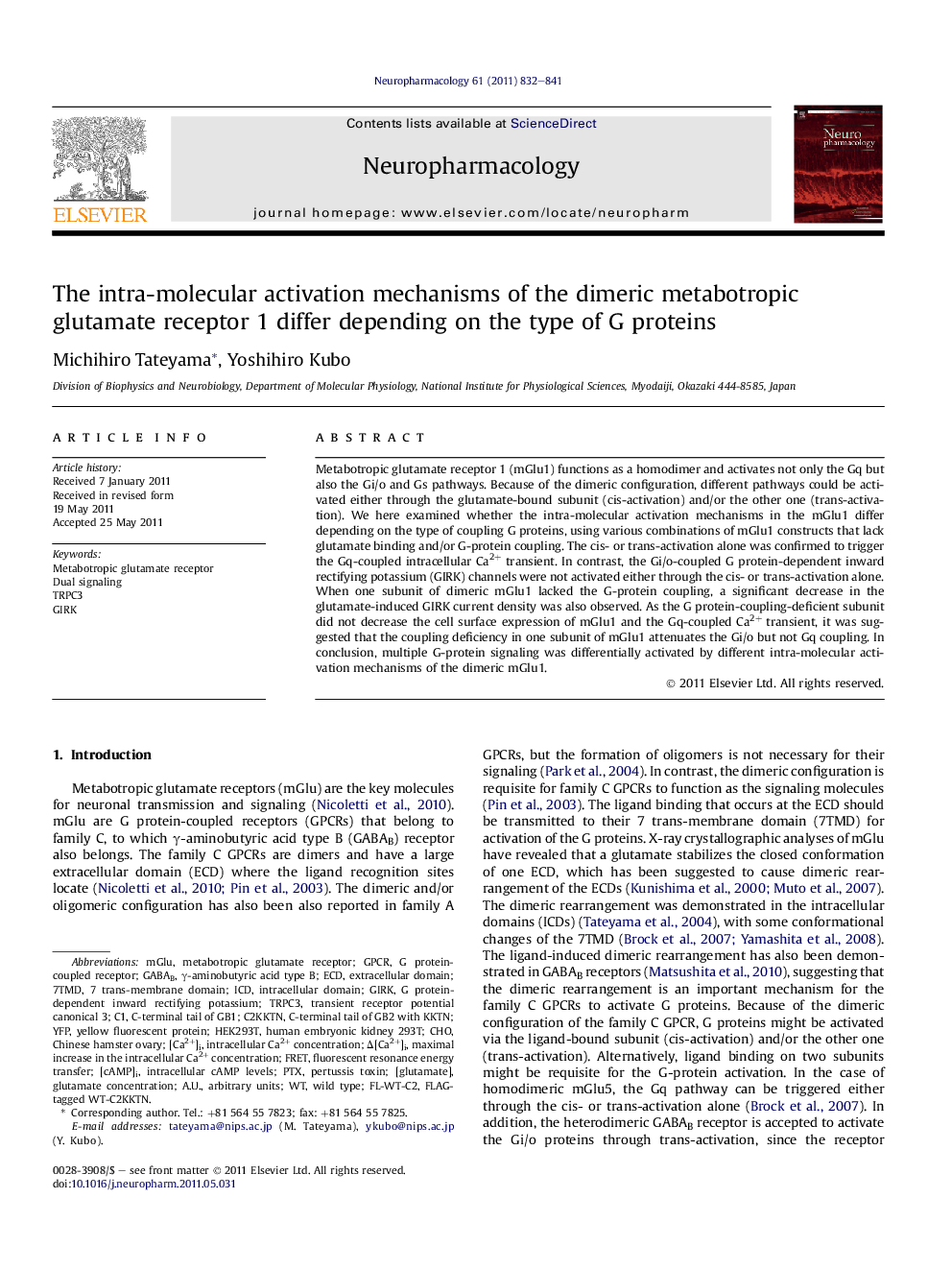| Article ID | Journal | Published Year | Pages | File Type |
|---|---|---|---|---|
| 2493885 | Neuropharmacology | 2011 | 10 Pages |
Metabotropic glutamate receptor 1 (mGlu1) functions as a homodimer and activates not only the Gq but also the Gi/o and Gs pathways. Because of the dimeric configuration, different pathways could be activated either through the glutamate-bound subunit (cis-activation) and/or the other one (trans-activation). We here examined whether the intra-molecular activation mechanisms in the mGlu1 differ depending on the type of coupling G proteins, using various combinations of mGlu1 constructs that lack glutamate binding and/or G-protein coupling. The cis- or trans-activation alone was confirmed to trigger the Gq-coupled intracellular Ca2+ transient. In contrast, the Gi/o-coupled G protein-dependent inward rectifying potassium (GIRK) channels were not activated either through the cis- or trans-activation alone. When one subunit of dimeric mGlu1 lacked the G-protein coupling, a significant decrease in the glutamate-induced GIRK current density was also observed. As the G protein-coupling-deficient subunit did not decrease the cell surface expression of mGlu1 and the Gq-coupled Ca2+ transient, it was suggested that the coupling deficiency in one subunit of mGlu1 attenuates the Gi/o but not Gq coupling. In conclusion, multiple G-protein signaling was differentially activated by different intra-molecular activation mechanisms of the dimeric mGlu1.
► We investigated the activation mechanisms of G proteins by dimeric mGlu1. ► We examined the effects of one G protein-coupling-deficient subunit of dimer. ► Activation of Gq pathway was not affected by the coupling-deficient subunit. ► In clear contrast, activation of Gi pathway was significantly attenuated. ► Activation mechanisms by mGlu1 dimer differ depending on the types of G proteins.
